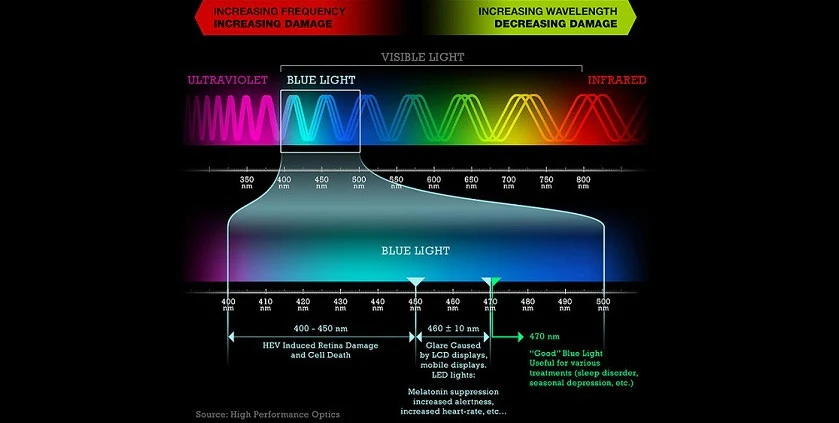
Flat screen televisions, smartphones, laptops, and Ipads are commonplace technologies in homes. However, the aforementioned devices emit a wavelength (< 550 nm) known as blue light. Such light, even with brief exposure, has been shown to hinder melatonin production; a key hormone responsible for causing and regulating sleep (Burkhart & Phelps, 2009). If blue light could be filtered out from the photosensitive fibers within the eye, it might allow for normal regulation of melatonin. Thus, the following sections will explore the work of Burkhart and Phelps (2009) in achieving such an end.

Complete cessation of technologies emitting blue light in the evening would be an effective means of reducing exposure. However, such a demand may prove unreasonable for most individuals. A more viable and attractive alternative would be one that allowed continued use of devices in the evening and before bedtime, while filtering out blue wavelengths. Burkhart and Phelps (2009) proposed the use of amber colored glasses, a simple and cheap option, which could have the capacity of filtering out wavelengths associated with disturbed melatonin production (< 550 nm, which is blue light).

The researchers enrolled 20 participants (9 males/11 females) 18 to 68 years of age with a mean age of 34 years who had sleep-onset and mid-sleep insomnia. They were randomly assigned to either receive low-blue-light or placebo glasses, and blinded to the amber lens hypothesis. There were 10 participants in each condition (experimental vs. control) (Burkhart & Phelps, 2009). Participants completed a sleep diary, which included rating sleep quality on a Likert scale of 1 to 10, with 0 being very poor and 10 being very good. Additionally, all participants were instructed to wear low-blue-light or placebo glasses 3 hours before normal bedtime during the 3-week study.
At the conclusion of the study, the amber lens group experienced significant (p < .001) improvement in sleep quality relative to the control group and positive affect (p =.005). Mood also improved significantly relative to controls (Burkhart & Phelps, 2009). Thus, due to the cost-effectiveness and simplicity of amber glasses (i.e., 7 dollars in the United States), such an intervention might be a reasonable option for individuals suffering from sleep-onset or mid-sleep insomnia.
References
Burkhart, K., & Phelps, J. R. (2009). Amber lenses to block blue light and improve sleep: A randomized trial. The Journal of Biological and Medical Rhythm Research, 26(8), 1602-1612.
-Michael McIsaac
